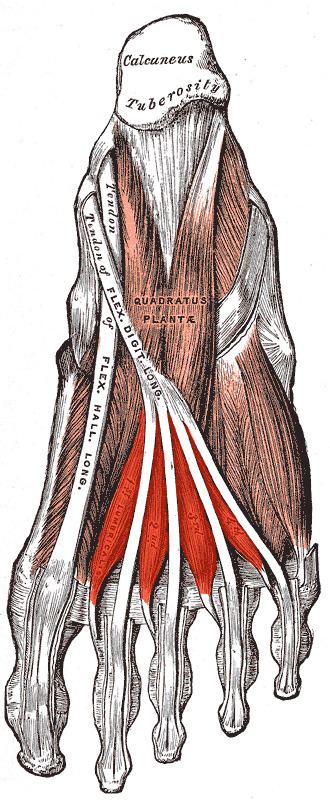 | ||
Insertion Proximal phalanges and extensor tendons of the 4 lateral toes Artery Medial and Lateral plantar arteries Nerve medial and lateral plantar nerves (S3) Actions Flexes metatarsophalangeal joints, extends interphalangeal joints Latin musculus lumbricalis pedis | ||
The lumbricals are four small skeletal muscles, accessory to the tendons of the flexor digitorum longus and numbered from the medial side of the foot; they arise from these tendons, as far back as their angles of division, each springing from two tendons, except the first.
Contents
The muscles end in tendons, which pass forward on the medial sides of the four lesser toes, and are inserted into the expansions of the tendons of the Extensor digitorum longus on the dorsal surfaces of the proximal phalanges. All four lumbricals insert into extensor hoods of the phalanges, thus creating extension at the inter-phalangeal (PIP and DIP) joints. However, as the tendons also pass inferior to the metatarsal phalangeal (MTP) joints it creates flexion at this joint.
Variations
Absence of one or more; doubling of the third or fourth even the fifth. Insertion partly or wholly into the first phalanges.
Innervation
The most medial lumbrical is innervated by the medial plantar nerve while the remaining three lumbricals are supplied by the lateral plantar nerve.
